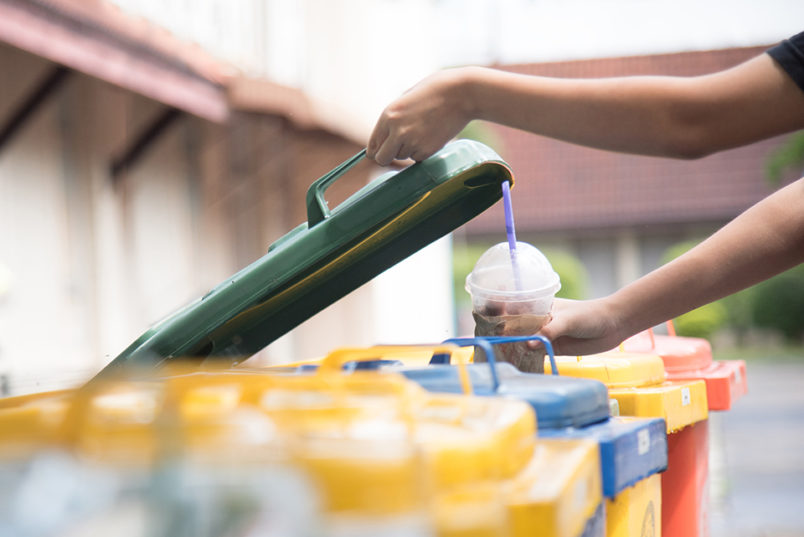Are You Guilty of Wishful Recycling?
Wishful recyclers often recycle food and beverage containers that still contain food residue. These items can’t be recycled and will be sent to landfills.
March 24, 2022
When sorting waste between whether it should be sent to a landfill or recycled, many people instinctively think some of their waste is recyclable, even though it is not. This issue is called “wishful recycling,” and although people have good intentions when wishfully recycling some of their waste, their actions may cause more harm than good.
According to Sustainable Connections, one in four items that are placed in the recycling bin cannot be recycled. There are many misconceptions about what can and cannot be recycled. For example, the plastic people use for containers and packaging has a recycling label that has a number from one to seven. The label usually has the recycling logo, which may cause many people to think that all types of plastic are recyclable. However, only plastics with the numbers one or two, Polyethylene Terephthalate (PET) and High-Density Polyethylene (HDPE), can be recycled. When plastics that are not recyclable are placed in the recycling bin, they are often sent to landfills since they can’t be easily melted to create new plastic products.
Another commonly unrecyclable item that people mistakenly recycle is styrofoam. Styrofoam is often used as an insulator for foods and drinks, and because of its resemblance to plastic, many people try to recycle it. Despite people’s efforts, it cannot be recycled because it is made of styrene, so it must be sent to landfills where it takes 500 years to decompose (Washington University). Not only does styrofoam harm the environment, but it also causes adverse health effects. The styrene in styrofoam releases toxic chemicals that can potentially cause cancer. Upon realizing this, Abigail Lee (10) says that she “will be more cautious about using styrofoam products to protect the environment and [her] health.”
People also tend to recycle plastic and cardboard food containers that contain some food residue. Even though the container is recyclable, since it contains food leftovers, it will not be accepted by recycling facilities.
When unrecyclable items are recycled, they contaminate the rest of the items they are placed with. This results in an unnecessary number of recyclable items being sent to landfills. In fact, the University of Washington found that wishful recycling “could be contaminating inbound streams of recyclable materials and causing tons (literally, tons) of recycled items to be sent to landfills instead of being recycled.” If unrecyclable items do somehow end up at recycling facilities, they could damage machinery and make workers’ jobs more difficult.
If you do find yourself guilty of wishful recycling, there are a couple of solutions to reduce your strain on the environment. For instance, you can start to be more mindful of what you throw away to ensure that you are recycling only what can be recycled. If you are unsure of what you can and cannot recycle, check ecomaine’s Recyclopedia. You can also avoid buying and using unrecyclable items to eliminate the possibility of wishful recycling. Through careful waste management, we can reduce wishful recycling and create a healthier environment.



































